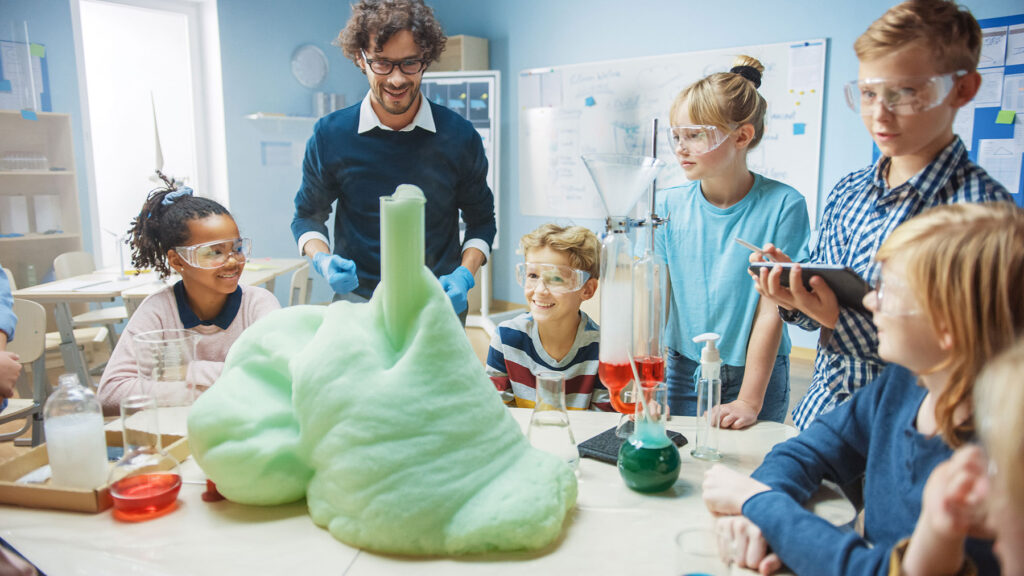Have you ever witnessed an experiment so visually stunning that it captures the imagination of both young and old alike? The Elephant Toothpaste experiment is one such marvel of science that combines simple household ingredients to create an explosive display of foam that resembles toothpaste being squeezed out of a tube, but on a much larger scale—hence the name “Elephant Toothpaste.” This experiment is not only a fantastic way to introduce the concepts of chemical reactions and catalysis to budding scientists but also provides a spectacular show of biochemistry in action – using a living organism, yeast!

Before we dive into the frothy depths of this experiment, let’s gather the materials you’ll need. The beauty of Elephant Toothpaste is that most of the ingredients are readily available, making it an accessible experiment for everyone.
Now that you have your materials ready, let’s get into the step-by-step process of creating your very own Elephant Toothpaste.
Safety is paramount, so start by putting on your safety goggles and gloves. Next, set up your container or tray in an area that can get a little messy. Place your reaction vessel (the bottle or cylinder) in the center of the tray.
In a small bowl, mix together one packet of yeast with about three tablespoons of warm water. Stir for about 30 seconds until the yeast is well hydrated. This “awakens” the yeast, a type of fungus, from their dormant state. The yeast contain your catalyst to speed up the reaction.
Carefully pour half a cup of hydrogen peroxide into your reaction vessel. Add a squirt of dish soap to the hydrogen peroxide and gently mix. If you’re using food coloring, add it now by dripping colors along the inside wall of the vessel for a marbled effect.
Now for the exciting part! Pour the yeast mixture into the hydrogen peroxide solution and step back. Watch as the mixture foams up out of the bottle, creating an exothermic reaction that not only produces foam but also releases heat.
The Elephant Toothpaste experiment is a fantastic demonstration of a catalyzed decomposition reaction. Hydrogen peroxide (H₂O₂) naturally breaks down into water (H₂O) and oxygen (O₂) over time. The yeast contains a catalyst, a substance that speeds up a reaction without being consumed in the process. When the yeast is added to the hydrogen peroxide, it breaks down the hydrogen peroxide into water and oxygen gas much faster than it would on its own. The oxygen gas gets trapped in the dish soap, creating bubbles, and voila—elephant toothpaste!
While the Elephant Toothpaste experiment is a lot of fun, it’s important to conduct it with safety in mind. Always wear protective gear, and conduct the experiment in a well-ventilated area or outdoors. Be mindful that the reaction vessel can get warm to the touch due to the exothermic reaction.
The Elephant Toothpaste experiment is more than just a fun activity; it’s a vivid demonstration of chemical reactions and the role of catalysts in science. It’s a perfect example of how learning can be fun, engaging, and informative all at once. Whether you’re a teacher, a parent, or just a curious mind, this experiment offers a fantastic way to explore the wonders of chemistry and biology. So, gather your materials, take the necessary safety precautions, and get ready for a foamy adventure that’s sure to impress!
Remember, science is all about exploration and discovery. Experiments like Elephant Toothpaste allow us to witness the beauty of chemistry and biology in action, sparking curiosity and inspiring future scientists. Happy experimenting!
If you like this life science experiment, consider checking out some of our other labs here: https://bioboxlabs.com/science-subscription-box/
Your students’ first BioBox is not just a starter kit, it is an introduction to the biological world.
Microscope Box
The Microscopic World
Get your own microscope and learn to use it

Our store is now closed as we take time to reimagine the future of BioBox Labs. We won’t be accepting new orders at this time, but stay tuned—we hope to be back in 2026 with exciting updates! Thank you. - Lisa